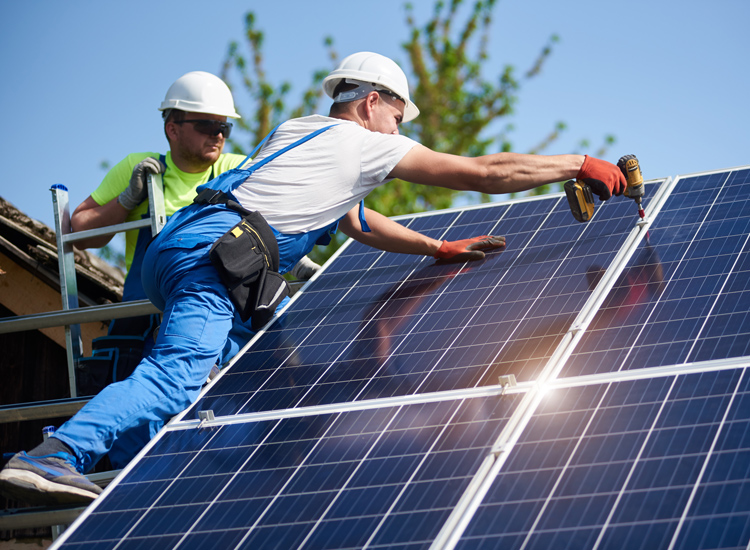Photovoltaics uses solar energy by converting the sun’s radiation directly into electrical energy and serving as a power supply.

Photovoltaics is the direct conversion of light energy, mostly from sunlight, into electrical energy by means of solar cells. In order to replace conventional power plants, generating grid-connected electricity is done via solar modules on roof surfaces and as ground-mounted systems. Therefore, this type of electricity generation counts as renewable energy. Before use, an inverter is implemented to convert direct current into alternating current. The power that is generated this way can be used by the producer, fed into the power grid, or stored in electricity storage systems.
Sunlight is also emitted in the form of electromagnetic radiation (photons). When sunlight hits a specially processed, often silicon-based semiconductor material – the photocell – , it can set electrons in motion and thus generate electricity.
Many solar cells form a photovoltaic module (1 m x 0.5 m), several modules then form the photovoltaic system. The direct current generated by the system is converted into alternating current by an inverter and fed into the grid or used directly for one’s own purposes.
This basically depends on the level of the feed-in tariff. For most operators, it is now worthwhile to consume the generated solar power themselves, as the electricity purchase costs from the grid are often more expensive.
For climate protection reasons, it is often worthwhile to make maximum use of the roof area, which means that more electricity can be fed into the grid. The regenerative electricity fed into the grid will be needed in the future for other types of use, such as e-mobility. This way, a conversion of the power supply to renewable energies can be achieved.
For this purpose, the German Federal Ministry for Economic Affairs and Energy has set up the central EEG clearing office, to which inquiries can be addressed directly: Clearing House
With rising electricity prices and falling feed-in tariffs, the focus is shifting to storing self-generated electricity. To increase self-sufficiency and reduce the need to purchase of grid electricity, excess stored solar power can be used during times of low irradiation. Storage systems are often supported by KfW subsidy programs. Further information is available from the Federal Network Agency: www.bundesnetzagentur.de
Do not hesitate to contact us, we will be happy to advise you individually.
Contact Us